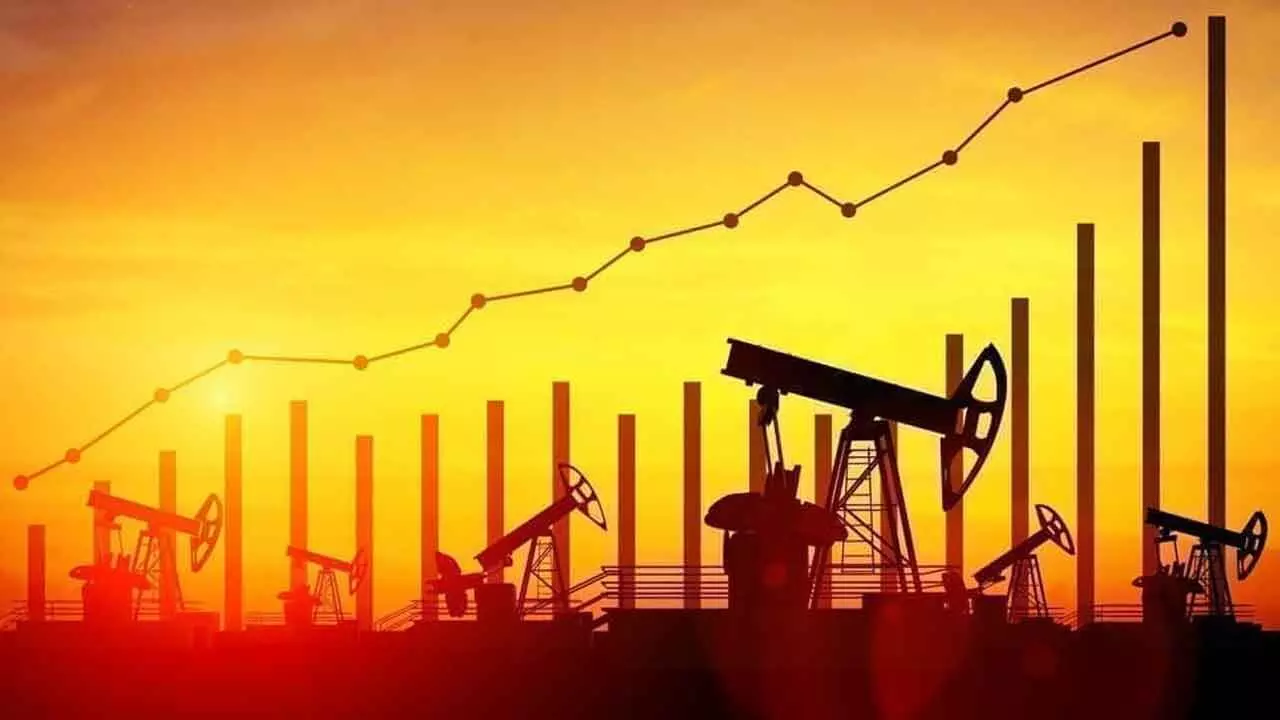Oil Jumps on Middle East Tensions: Brent Surges 13% in 10 Days, Goldman Sachs Eyes $110
Brent Crude has soared 13% in 10 days due to the Israel-Iran conflict, with Goldman Sachs predicting a near-term peak of $110. This article explores the impact of US strikes on Iran, the critical Strait of Hormuz threat, and expert insights on oil market volatility and investment strategies
Oil Jumps on Middle East Tensions: Brent Surges 13% in 10 Days, Goldman Sachs Eyes $110

Oil Jumps on Middle East Tensions: Brent Surges 13% in 10 Days, Goldman Sachs Eyes $110
Mumbai, India – The global oil market is experiencing significant turbulence, with Brent Crude prices surging a remarkable 13% over the past ten days, driven by escalating conflict between Israel and Iran. This morning, oil prices climbed to five-month highs after the United States launched strikes on Iran's nuclear facilities, immediately stoking fears of supply disruptions. While initial gains have somewhat pared back, the heightened geopolitical risk premium remains a dominant factor.
The sharp ascent in crude prices, which saw both Brent Crude and Nymex futures reach their highest levels since January, came in the wake of U.S. President Donald Trump's announcement that he had "obliterated" key Iranian nuclear sites. Given Iran's status as OPEC's third-largest crude producer, these actions instantly triggered widespread concerns about the stability of global oil supply flows. Market participants are now bracing for the possibility of further price gains as anxieties over crude supply mount.
Strait of Hormuz: The Crucial Chokepoint in Focus
A major source of anxiety for the oil market is the Strait of Hormuz. Iran's state-owned Press TV has reported that the Iranian parliament has approved a measure to close this critical waterway. While Iran has historically issued such threats without executing them, the current volatile environment makes this a more palpable concern. Analysts acknowledge that while alternative pipeline routes exist, a significant volume of crude would still be unable to be exported if the Strait of Hormuz became inaccessible. Experts caution that the current geopolitical risk premium on oil prices may not be sustainable without tangible supply disruptions, but the threat alone is enough to keep markets on edge.
Goldman Sachs' Outlook: A Path to $110?
Adding to the market's unease, a Reuters report indicates that Goldman Sachs is forecasting Brent Crude to briefly peak at $110 per barrel. This scenario, according to the investment bank, would materialize if oil flows through the Strait of Hormuz were to be halved for a month. Following such an event, prices are expected to remain down by 10% for the subsequent eleven months. Crucially, Goldman Sachs' projection is based on the assumption that there would be no sustained and very large disruption to global oil and natural gas supply, recognizing the strong global incentives to prevent such an outcome.
The Bigger Picture: Volatility and Opportunities
Since the conflict intensified on June 13th, Brent crude has seen a 13% increase, while West Texas Intermediate (WTI) has risen by approximately 10%. This sharp climb highlights the direct impact of geopolitical events on commodity markets.
Market veteran Ajay Bagga shared his insights, stating that "Iranian asymmetric retaliation is a big risk," which could lead to "inordinate market volatility." He emphasized that "Oil is jittery as its 24% supply route is under potential closure threat, though history and economic pragmatism both dictate that this will not happen." Bagga advises traders to be cautious amidst the volatility, as they could be "stopped out on both sides." For investors, however, he offered a more optimistic long-term view: "geopolitical conflicts historically represent good buying opportunities." He recommends keeping "some cash ready to deploy systematically if markets react downwards."
Meanwhile, Ole Hansen, head of commodity strategy at Saxo Bank, in a recent market commentary, suggested that the unwinding of some long positions accumulated during the recent price rally could temper the upside to oil prices. This implies that while initial reactions are strong, profit-taking might limit excessive surges.
As the situation in the Middle East continues to unfold, the oil market remains highly sensitive to developments. Investors and analysts alike will be closely monitoring the Strait of Hormuz and any further actions by the involved parties, as these will be key in shaping the trajectory of crude prices in the coming weeks.

